Among other things, the Croatian island of Korčula is famous for its sweets. So much so that Franica Tasovac, a local teacher, turned a school project on the history of Korčula’s desserts into a whole booklet of recipes collected from local grandmothers. While these dishes are often found in different versions all over Dalmatia, a few distinctively Korčulan characteristics have emerged: the frequent use of almonds and/or walnuts, a fondness for orange and lemon zest, and a wide range of cookies and small bites.
Islanders used to bake many of these pastries for special occasions such as religious holidays, weddings, and baptisms. Today they’ve become everyday treats, sold in shops like Smiljana Matijaca’s Cukarin in the old town. Opened in 1994, Matijaca’s shop is named after a funny-shaped biscuit flavored with citrus zest, and it has acquired a cult following among tourists. Should you decide to pay a visit, get there early before the most popular items run out! Matijaca doesn’t sell only cukarini, of course. The amareta is a round cookie made with a lot of almonds and sugar. The “Marco Polo” bombica, a sort of big chocolate rocher speckled with walnuts and filled with chocolate buttercream, pays tribute to that famous explorer’s capture and short imprisonment on the island (or perhaps the invented tradition claiming that he was actually born there). The harubica consists of a dense carob cake topped with a copious amount of orange marmalade and candied citrus peel. And then there’s the klašun.
Among the Korčulan sweets, the klašun (plural, klašuni) has become a popular edible souvenir. Indeed, the small moon-shaped cookie filled with a nut paste flavored with orange marmalade brings together all the authentic island flavors. Let’s dissect the recipe (and my interpretation of it) in more detail:
- In the old days, the dough was made with lard, but today’s bakers tend to use butter instead. On the other hand, everyone still insists on using baker’s ammonia rather than modern baking powder. You’ve probably never worked with ammonium carbonate, and there is a good reason for that: it gives off an awful smell that will make your raw dough inedible and will dissipate only during baking. Yet, after testing, I have to admit that it produces slightly better results, giving you an airier, more tender dough. So I decided to keep it in my recipe! Feel free to replace it with baking powder in the same amount – just be aware that those in the know will immediately notice. The ammonia produces a characteristic dark brown ring around the filling, and the ring will be absent if you use baking powder instead.
- Depending on whose grandmother’s recipe you’re following, the filling is made with either almonds or walnuts. I find that a mix of both tastes even better! The walnut boasts a more pronounced flavor, and the almond prevents it from becoming overpowering.
- The cookies are often flavored with rose rakia, a spirit that’s probably impossible to find outside of the Balkans. You might be able to find plain rakia, but luckily grappa also constitutes an adequate substitute. If you’ve tried my Sarajevo mule without overindulging, you should have some rose syrup left over too. Combine the grappa with the rose syrup, and brush the mixture on top of the cookies.
- Finally, rather than sprinkling the cookies with granulated sugar, I mix confectioners’ sugar with raspberry and rose powders. This represents a sharp departure from tradition, both visually and gustatorily, but I think it’s worth it. You can use the leftover raspberry powder to make smoothies or cakes while feeling good about adding a micronutrient-rich superfood to your hypercaloric meal. As for the rose powder, it has way more uses than you’d think. Just check out the product page of the powder I bought: calms, cools, and soothes your skin; fades blemishes and age spots naturally; tones skin; nourishes hair follicles. So many claims! Really, the true question isn’t what you’re gonna do with it, but how come you don’t already have some in your pantry or bathroom cabinet.

Klašuni
Yields 18 cookies
Total preparation: 3 hours
Active preparation: 1 hour 20 minutes
Klašun dough
75 g butter, room temperature
100 g sugar
1 g salt
70 g (about 1 1/2) egg
15 g (about 1) egg yolk
3 g vanilla extract
0.5 g lemon zest
180 g AP flour
35 g milk
10 g baker’s ammonia
150 g cake flour
- In the bowl of an electric mixer, whip the butter with the sugar and salt on high speed. Lower the speed to medium, add the egg and egg yolk, and continue mixing for about a minute. Mix in the vanilla extract, lemon zest, and about 1/5 of the AP flour. Reserve.
- Bring the milk to a boil in the microwave. Stir in the ammonia – the liquid will get very foamy and produce a very pungent smell. Pour into the dough while mixing on medium-low speed.
- Incorporate the remaining AP flour and the cake flour in several additions, then mix for another 5 minutes. Cover and let rest for an hour.
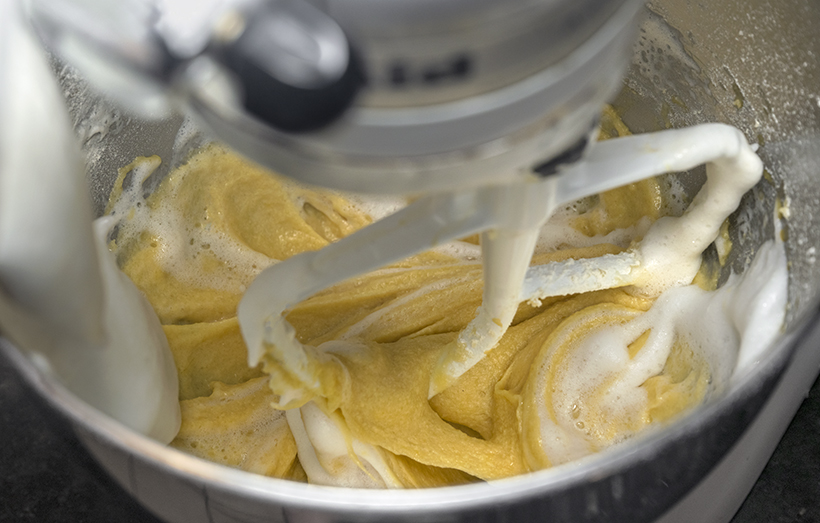
Walnut filling
25 g golden raisins
20 g grappa
145 g walnut halves
45 g sugar
45 g orange blossom honey
105 g milk
4 g vanilla extract
3 g orange zest, finely grated
18 g orange marmalade
140 g almond powder
- Place the raisins and the grappa in a small bowl, microwave for 30 seconds, then let soak for 10 minutes.
- Place the walnut halves, sugar, honey, milk, vanilla extract, orange zest, and marmalade in a blender, and process on high speed for about 1 minute, until smooth. Transfer to a bowl, and use a spatula to evenly incorporate the almond powder, raisins, and grappa. Reserve in the refrigerator.
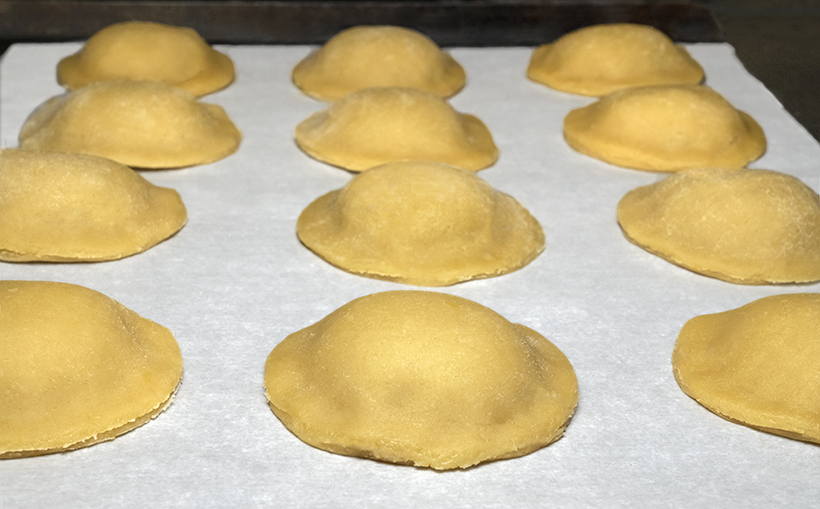
Assembly
klašun dough
AP flour, for dusting
walnut filling
20 g grappa
20 g rose syrup
10 g confectioners’ sugar
3.5 g raspberry powder (freeze-dried)
1.5 g rose powder (food grade)
- Place a dish filled with water on the lower shelf of a 175 C / 350 F oven.
- Divide the klašun dough into 2 pieces, about 315 g each. Roll out each one to a 24 cm x 30 cm rectangle. With the short edge facing you, place about 25 g of filling at regular intervals, about 2 cm from the bottom of – you should have room for three. Fold the bottom edge of the dough over the filling, and seal well. Cut out 3/4 moons, using a cookie cutter of 7 cm diameter (see photos below). Place the klašuni on a baking sheet lined with parchment paper, leaving some space between them as they will rise. Cut off and reserve the scraps of folded dough, then repeat.
- You should get at least six klašuni out of each rolled-out piece of dough. By collecting the scraps and rolling them into another rectangle of the same size, you’ll get six more.
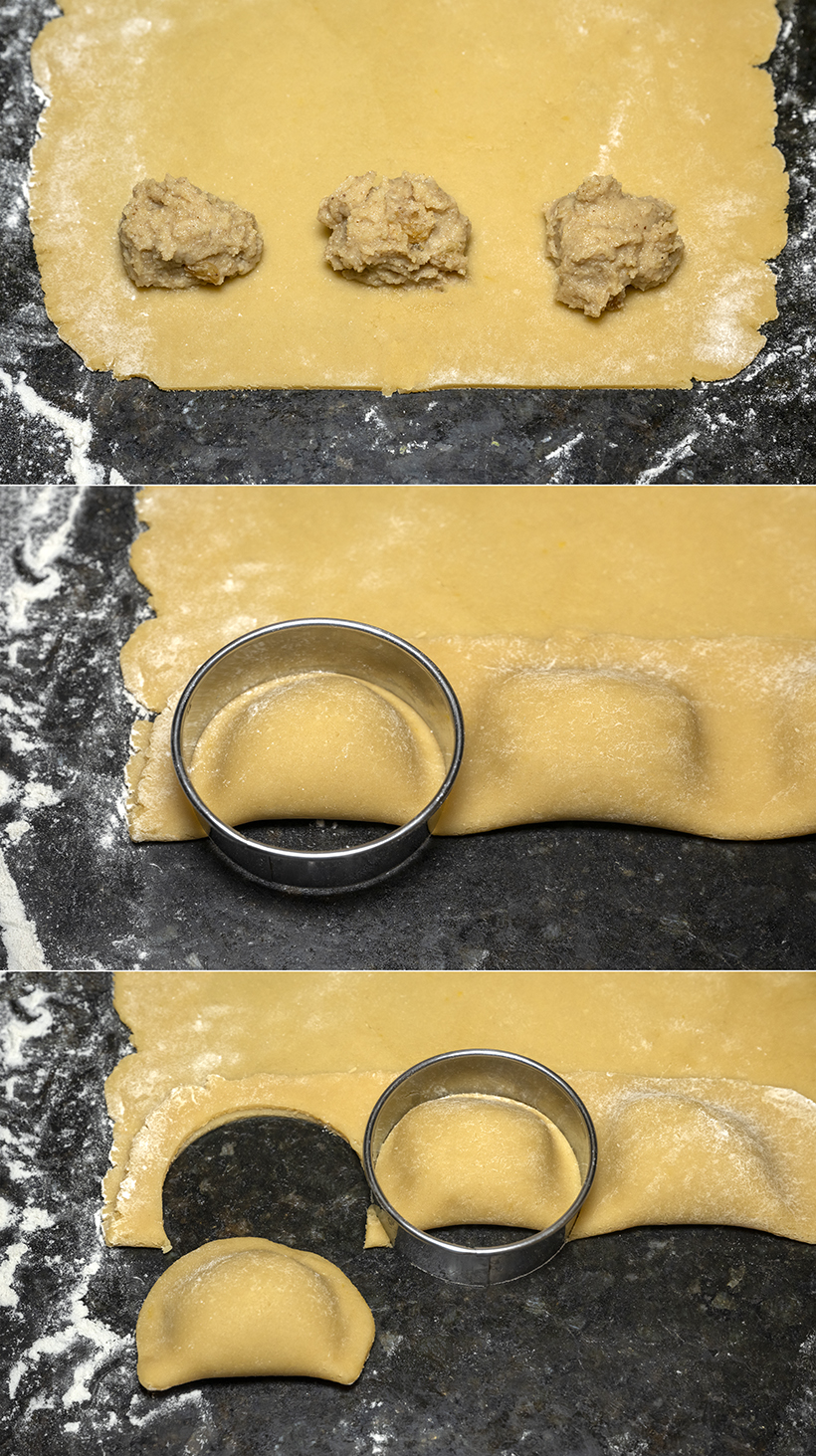
- Place on the middle shelf of the oven and bake to a golden color, about 15-17 minutes. Let cool for 5 minutes.
- Combine the grappa and rose syrup in a small bowl, and generously brush each cookie with the mixture. Transfer to a wire rack and let cool completely. The klašuni can be kept on a plate wrapped in foil for a couple of days.
- Before serving, combine the confectioners’ sugar, raspberry powder, and rose powder in a sugar shaker, and sprinkle over the klašuni.
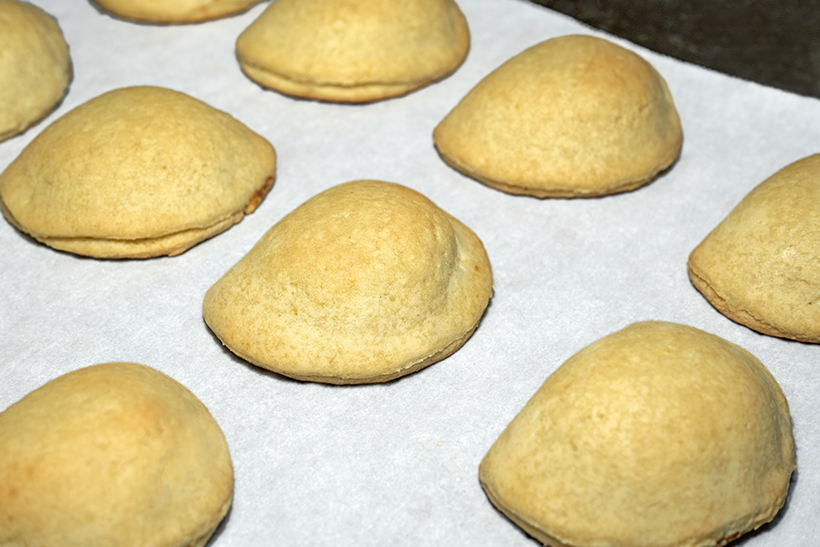

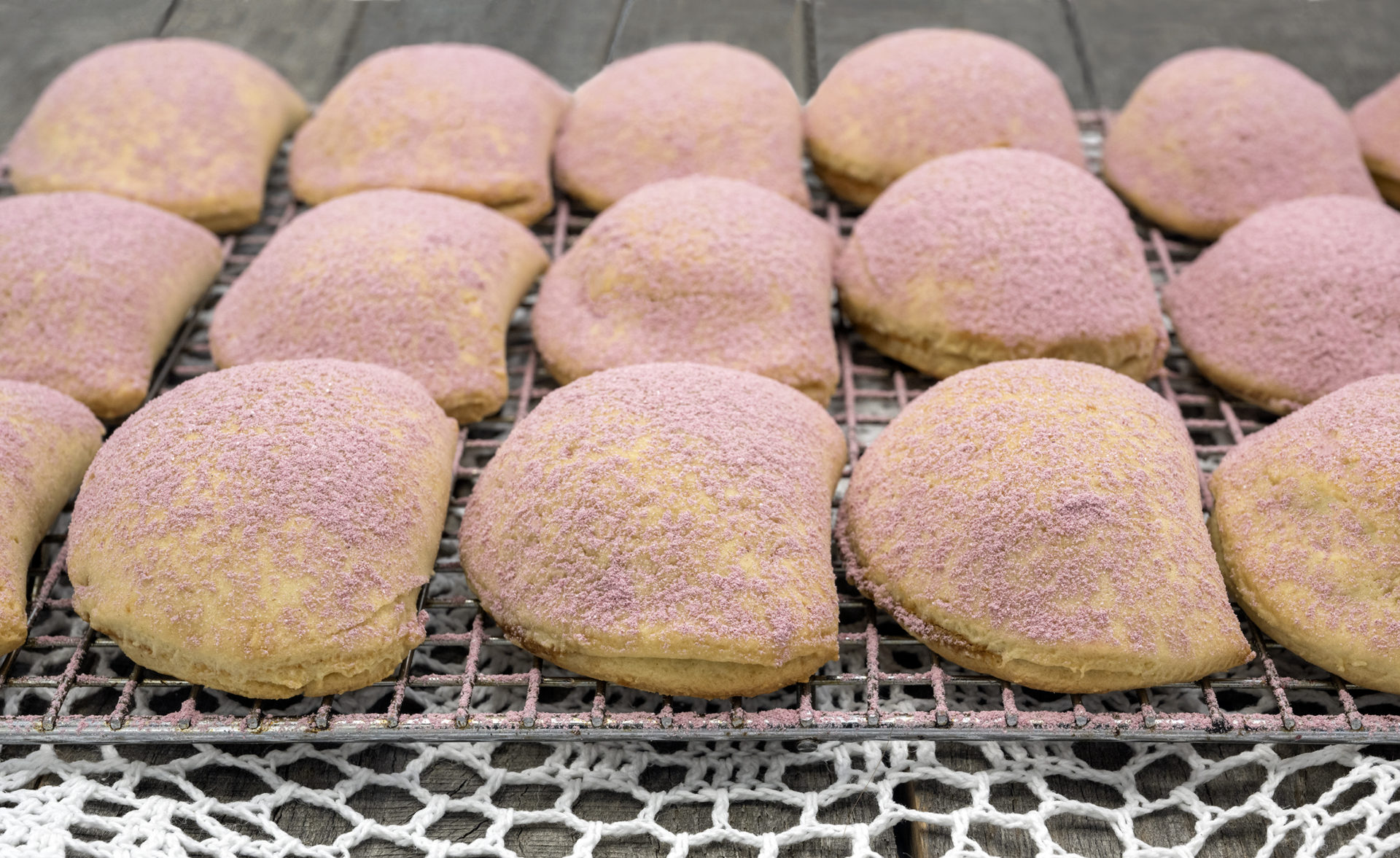





2 comments
I’ve never heard of klašun but these cookies look absolutely great! I’m really excited to try these soon! Thanks for the recipe!
Ovo mora da je fantastićno . Sasvim sigurno ću napraviti ali treba vremena za ovakve kolače .